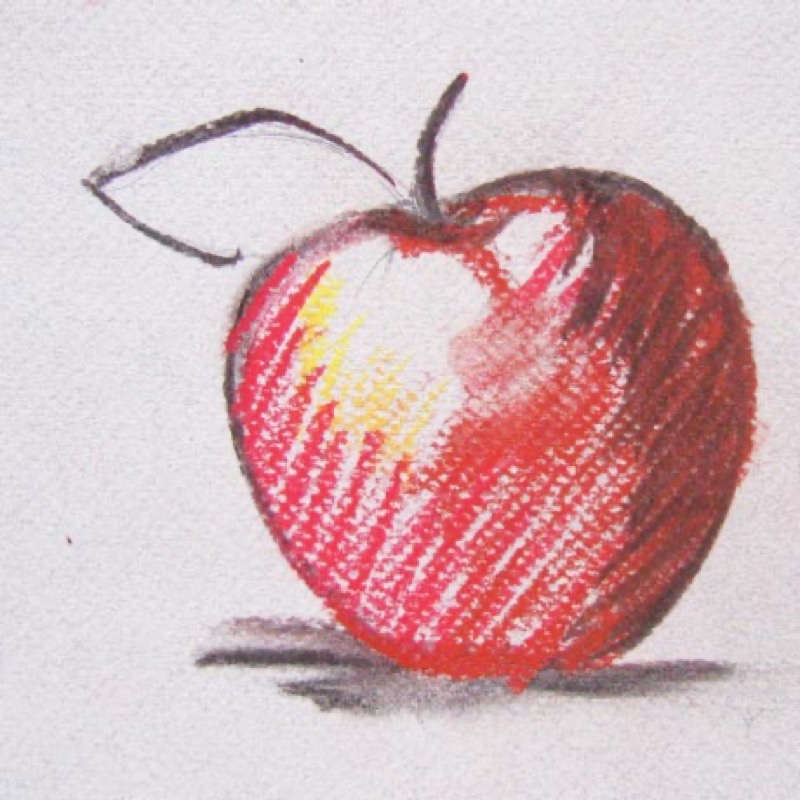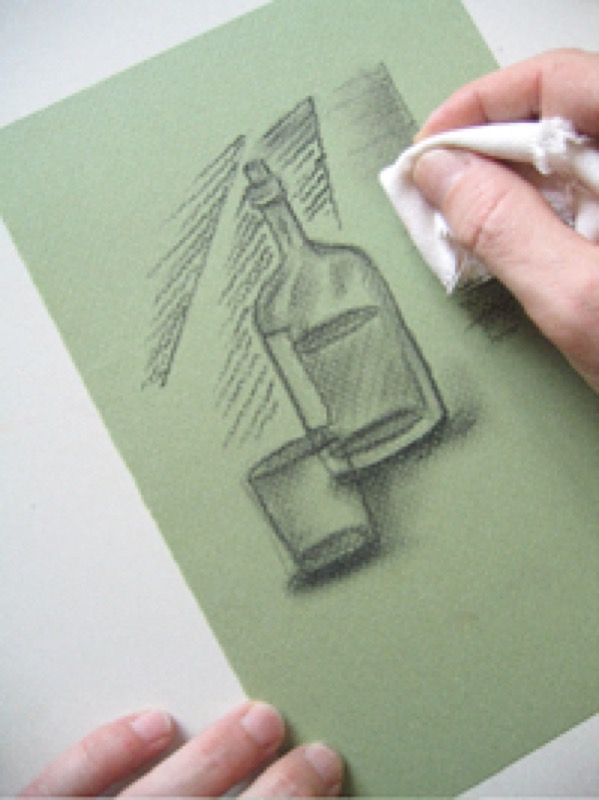While it is quite possible to create a work off the cuff, doing a preliminary drawing is always advisable.
What you need to know
There are two techniques for creating a sketch:
- Using square pastels to lightly shade in the main forms with colors appropriate to the final result.
- Lightly drawing with charcoal: this is more precise, and includes the broad lines, contours, and even, if you wish, the details.


